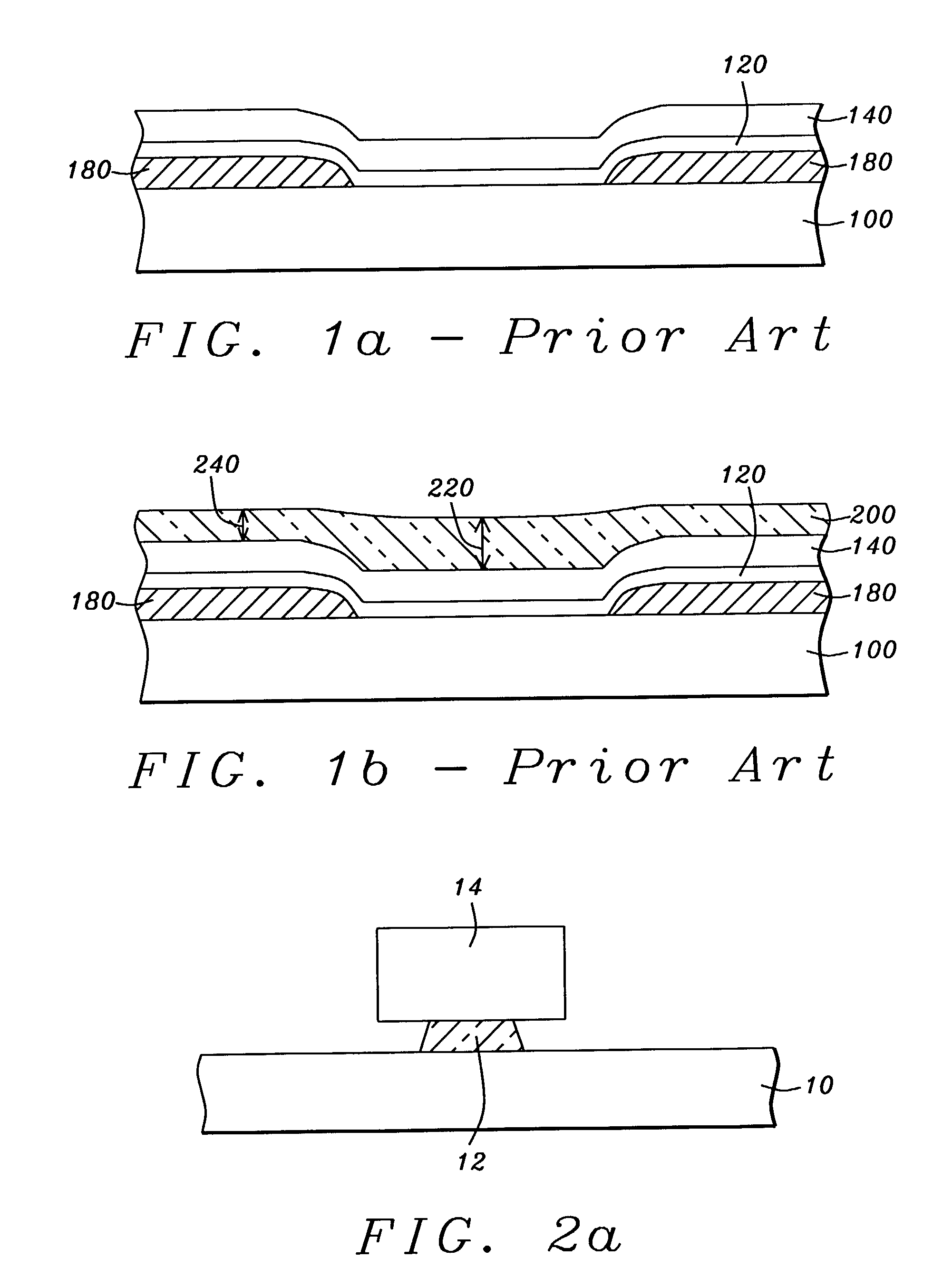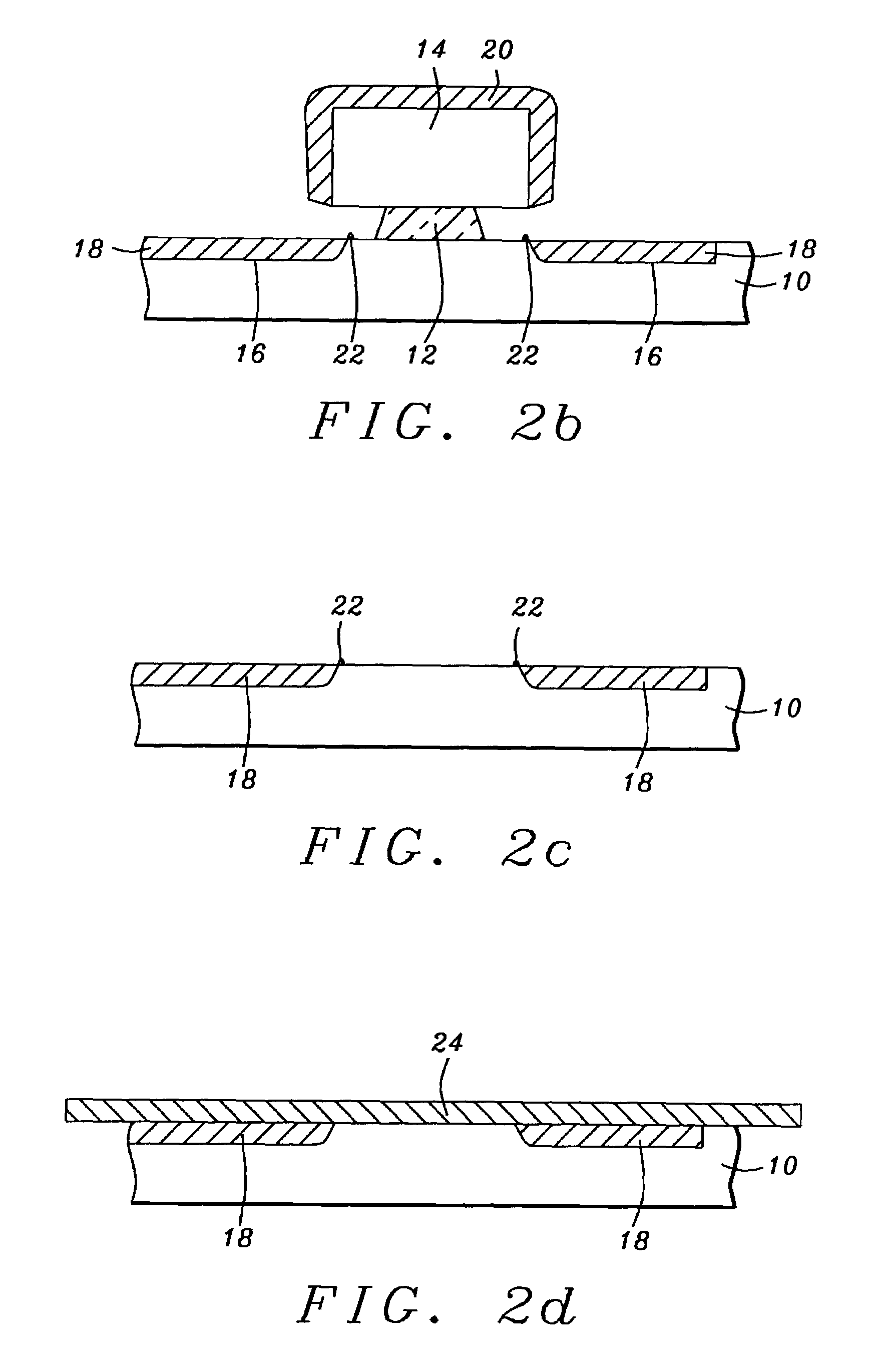Method to make planarized GMR head for high track density
a technology of magnetic read head and planarized gmr, which is applied in the field of fabrication of giant magnetoresistive (gmr) magnetic read head, can solve the problems of disadvantageous further processing and stringent insulation constraints, and achieve the effect of better control of ion-beam deposition (ibd) and better definition of the track width of the sensor layer
- Summary
- Abstract
- Description
- Claims
- Application Information
AI Technical Summary
Benefits of technology
Problems solved by technology
Method used
Image
Examples
Embodiment Construction
[0024]The preferred embodiment of the present invention is a method for forming a GMR read head having a planar sensor element with a thin read-gap and narrow, precisely defined read-width which is well insulated from the bottom magnetic shield on which it is formed.
[0025]Referring first to FIG. 2a, there is shown an initial step in the method. The schematic drawing shows a cross-sectional view, in the air-bearing surface plane of the element, of a bottom magnetic shield (10) on which has been formed a bi-layer lift-off stencil of a type well known in the prior art. The stencil will serve, initially, as an ion-beam etching (IBE) mask and then serve, finally, as an ion-beam deposition (IBD) mask. The stencil is formed of a lower pedestal (12) of polydimethylglutamide (PMGI) formed to a thickness of between approximately 1000 and 4000 angstroms, on which is formed an upper portion (14) of photoresistive material. The upper portion overhangs the pedestal on each side and the overhang s...
PUM
| Property | Measurement | Unit |
|---|---|---|
| Thickness | aaaaa | aaaaa |
| Dielectric polarization enthalpy | aaaaa | aaaaa |
| Density | aaaaa | aaaaa |
Abstract
Description
Claims
Application Information
 Login to View More
Login to View More - R&D
- Intellectual Property
- Life Sciences
- Materials
- Tech Scout
- Unparalleled Data Quality
- Higher Quality Content
- 60% Fewer Hallucinations
Browse by: Latest US Patents, China's latest patents, Technical Efficacy Thesaurus, Application Domain, Technology Topic, Popular Technical Reports.
© 2025 PatSnap. All rights reserved.Legal|Privacy policy|Modern Slavery Act Transparency Statement|Sitemap|About US| Contact US: help@patsnap.com



